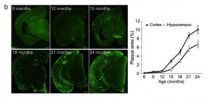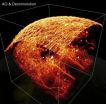(Press-News.org) The mechanism which underlies the susceptibility of liver disease patients to life-threatening infection has been uncovered by Wellcome Trust-funded medical scientists, who have also suggested a possible treatment to reverse immune suppression in these patients.
Liver disease, or cirrhosis, is currently the fifth leading cause of death in the UK. Cirrhosis patients are more than five times more likely to pick up infections in hospital than patients with other chronic conditions, due to reduced immunity which is a well-recognised feature of the disease.
In a study published today in Nature Medicine, researchers at UCL propose that the underlying cause of hyper susceptibility to infection in cirrhosis patients is due to the over production of the lipid hormone prostaglandin E2 (PGE2). This hormone prevents white blood cells from ingesting bacteria and killing them.
In the study, 75 blood samples were taken from patients at hospitals including University College Hospital, Royal Free Hospital, Royal London Hospital, St Mary's Hospital and the Hospital Clinic of Barcelona.
Researchers also found that a decreased concentration globular blood protein albumin, which catalyses the inactivation of PGE2 in liver disease patients was contributing to low immunity.
The authors of the study have therefore suggested that cirrhosis patients should receive albumin infusions to reverse immune suppression in chronic liver disease.
The research was carried out by lead author Professor Derek Gilroy, Wellcome Trust Senior Research Fellow at UCL in collaboration with consultant hepatologist Dr Alistair O'Brien.
Professor Gilory said: "A defective innate immune response was first observed in cirrhosis 30 years ago, and infection is most common cause of death in cirrhosis patients. However, the precise factors that cause reduced immunity have up until now been unknown.
"Our research has uncovered a powerful mechanism for immune suppression in cirrhosis patients and also proposes a relatively simple and safe treatment."
Dr O'Brien added: "We have discovered that the immune system of patients with advanced liver disease can be boosted for at least 24 hours by infusing albumin into a vein which reduces PGE2's effects. This safe process is currently given when patients need extra fluid, for example those with kidney damage.
"We propose that albumin be given daily to improve cirrhosis patients' immune systems and therefore prevent infection. We hope that this will save lives and reduce health-care costs and we intend to investigate this in a large scale clinical trial."
The researchers plan to carry out a clinical trial looking at the ability of albumin to reverse immune suppression in liver cirrhosis starting this summer. The trial is supported by the Wellcome Trust.
INFORMATION:
Contact
Clare Ryan
Senior Media Officer
The Wellcome Trust
T: +44 (0)20 7611 7262
E: c.ryan@wellcome.ac.uk
Notes for editors
About the Wellcome Trust
The Wellcome Trust is a global charitable foundation dedicated to achieving extraordinary improvements in human and animal health. It supports the brightest minds in biomedical research and the medical humanities. The Trust's breadth of support includes public engagement, education and the application of research to improve health. It is independent of both political and commercial interests. http://www.wellcome.ac.uk
Mechanism, and possible treatment, for immune suppression in liver disease uncovered
2014-04-13
ELSE PRESS RELEASES FROM THIS DATE:
How a Silly Putty ingredient could advance stem cell therapies
2014-04-13
ANN ARBOR—The sponginess of the environment where human embryonic stem cells are growing affects the type of specialized cells they eventually become, a University of Michigan study shows.
The researchers coaxed human embryonic stem cells to turn into working spinal cord cells more efficiently by growing the cells on a soft, utrafine carpet made of a key ingredient in Silly Putty. Their study is published online at Nature Materials on April 13.
This research is the first to directly link physical, as opposed to chemical, signals to human embryonic stem cell differentiation. ...
Fish from acidic ocean waters less able to smell predators
2014-04-13
VIDEO:
Scientists collected fish from the coral reefs shown here and found that fish from the more acidic waters of the bubble reefs were less likely to detect the odor of...
Click here for more information.
Fish living on coral reefs where carbon dioxide seeps from the ocean floor were less able to detect predator odor than fish from normal coral reefs, according to a new study.
The study confirms laboratory experiments showing that the behavior of reef fishes can be seriously ...
Hereditary trauma
2014-04-13
The phenomenon has long been known in psychology: traumatic experiences can induce behavioural disorders that are passed down from one generation to the next. It is only recently that scientists have begun to understand the physiological processes underlying hereditary trauma. "There are diseases such as bipolar disorder, that run in families but can't be traced back to a particular gene", explains Isabelle Mansuy, professor at ETH Zurich and the University of Zurich. With her research group at the Brain Research Institute of the University of Zurich, she has been studying ...
Glasses strong as steel: A fast way to find the best
2014-04-13
Scientists at Yale University have devised a dramatically faster way of identifying and characterizing complex alloys known as bulk metallic glasses (BMGs), a versatile type of pliable glass that's stronger than steel.
Using traditional methods, it usually takes a full day to identify a single metal alloy appropriate for making BMGs. The new method allows researchers to screen about 3,000 alloys per day and simultaneously ascertain certain properties, such as melting temperature and malleability.
"Instead of fishing with a single hook, we're throwing a big net," said ...
Virus-fighting genes linked to mutations in cancer
2014-04-13
Researchers have found a major piece of genetic evidence that confirms the role of a group of virus-fighting genes in cancer development.
Our understanding of the biological processes that cause cancer is limited. UV light and smoking are two well-understood cancer-causing processes. Exposure to either of these processes causes distinguishable patterns of genetic damage, or 'signatures', on the genome that can lead to cancer. All cancer-causing processes leave their own distinct imprint or signature, on the genomes of cancer cells.
The APOBEC family of genes control ...
Tiny particles could help verify goods
2014-04-13
CAMBRIDGE, MA -- Some 2 to 5 percent of all international trade involves counterfeit goods, according to a 2013 United Nations report. These illicit products — which include electronics, automotive and aircraft parts, pharmaceuticals, and food — can pose safety risks and cost governments and private companies hundreds of billions of dollars annually.
Many strategies have been developed to try to label legitimate products and prevent illegal trade — but these tags are often too easy to fake, are unreliable, or cost too much to implement, according to MIT researchers who ...
New mouse model could revolutionize research in Alzheimer's disease
2014-04-13
Alzheimer's disease, the primary cause of dementia in the elderly, imposes a tremendous social and economic burden on modern society. In Japan, the burden of the disease in 2050 is estimated to be a half a trillion US dollars, a figure equivalent to the government's annual revenues.
Unfortunately, it has proven very difficult to develop drugs capable of ameliorating the disease. After a tremendous burst of progress in the 1990s, the pace of discoveries has slowed. Dr. Saido believes that part of the difficulty is the inadequacy of current mouse models to replicate the ...
New technique takes cues from astronomy and ophthalmology to sharpen microscope images
2014-04-13
The complexity of biology can befuddle even the most sophisticated light microscopes. Biological samples bend light in unpredictable ways, returning difficult-to-interpret information to the microscope and distorting the resulting image. New imaging technology developed at the Howard Hughes Medical Institute's Janelia Farm Research Campus rapidly corrects for these distortions and sharpens high-resolution images over large volumes of tissue.
The approach, a form of adaptive optics, works in tissues that do not scatter light, making it well suited to imaging the transparent ...
Finding the switch: Researchers create roadmap for gene expression
2014-04-13
In a new study, researchers from North Carolina State University, UNC-Chapel Hill and other institutions have taken the first steps toward creating a roadmap that may help scientists narrow down the genetic cause of numerous diseases. Their work also sheds new light on how heredity and environment can affect gene expression.
Pinpointing the genetic causes of common diseases is not easy, as multiple genes may be involved with a disease. Moreover, disease-causing variants in DNA often do not act directly, but by activating nearby genes. To add to the complexity, genetic ...
Hop into Easter with Bunny Costumes from iLoveSexy
2014-04-13
With Easter less than two weeks away there is no time to waste. It's time to gather up all the candy, paint all the eggs, and perhaps find a festive bunny costume to wear for fun. At iLoveSexy, an online retailer for women's lingerie and costume, there is wide selection of costumes from popular brands like Leg Avenue, Roma Costume, Be Wicked, and more. Finding that bunny costume won't be a problem, and although they do not provide the conventional onesie type bunny outfit, the alternatives certainly do not disappoint.
There can be many different approaches to a bunny ...



